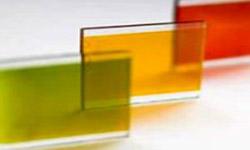Dye Sensitized Solar Cells Show Higher Performance with Bi-Layer Titanium Dioxide Nanostructures
Iranian researchers from Sharif University of Technology, in association with Cambridge University in Britain, successfully fabricated titanium dioxide dye sensitized solar cells (DSSCs).

The solar cells were produced in the form of bi-layer films with different crystalline structures and various morphologies of titanium dioxide nanostructures.
In order to obtain high conversion yield in solar cells, it is necessary to collect ion carriers produced by photons as electrical current before their re-combination. The collection of ion carriers must be carried out significantly faster than the re-combination. A promising solution is to increase the electron emission length in photo-anode electrode made of titanium dioxide nanoparticles with its one-dimensional nanostructures.
Morphology, crystalline structure and optical energy band gap are among the effective parameters on titanium dioxide film in electron transfer rate and the re-combination process of bi-layer DSSCs. Therefore, the researchers systematically studied titanium dioxide dye-sensitized solar cells with single layer and bi-layer film structures with various morphologies and crystalline phases. By measuring the inner resistance of cells, electron life-time, and electron transfer time, they also investigated the modification of their mechanism by using electrochemical impedance spectrometry (EIS).
Results showed that the bi-layer solar cells have higher fill factor rather than single layer cells with the same crystalline structure. In addition, the both single layer and bi-layer solar cells made of titanium dioxide with anatase crystalline structure have higher fill factor and power conversion yield in comparison to the cells consisted of rutile crystalline structure.
Source: Nanotechnology Now
- 351 reads
Human Rights
Fostering a More Humane World: The 28th Eurasian Economic Summi

Conscience, Hope, and Action: Keys to Global Peace and Sustainability

Ringing FOWPAL’s Peace Bell for the World:Nobel Peace Prize Laureates’ Visions and Actions

Protecting the World’s Cultural Diversity for a Sustainable Future

Puppet Show I International Friendship Day 2020

